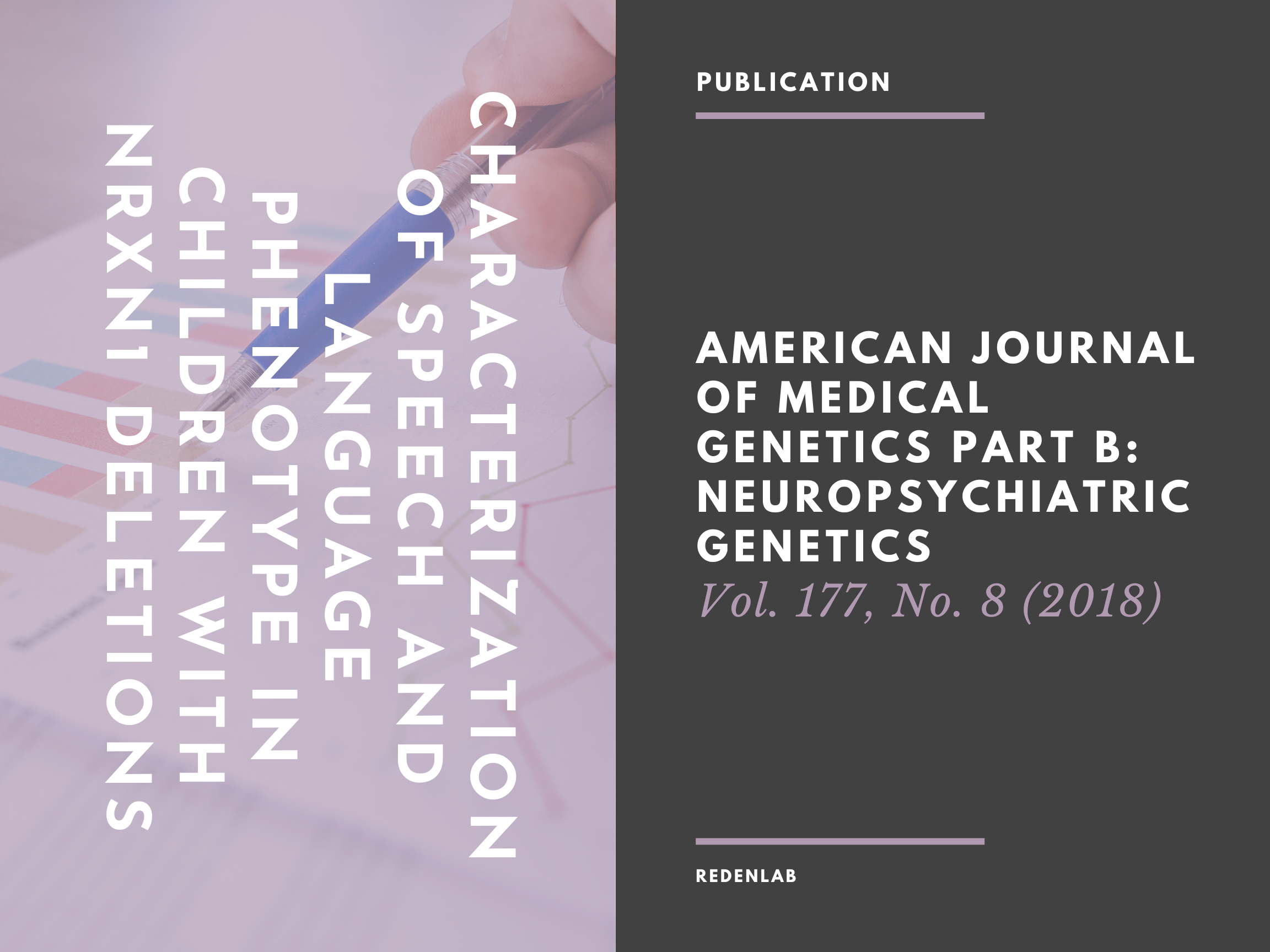SCIENCE: Characterization of speech and language phenotype in children with NRXN1 deletions

Neurexin 1 gene (NRXN1) deletions are associated with several neurodevelopmental disorders. Communication difficulties have been reported, yet no study has examined specific speech and language features of individuals with NRXN1 deletions. Here, we characterized speech and language phenotypes in 21 children (14 families), aged 1.8-17 years, with NRXN1 deletions. Deletions ranged from 74 to 702 kb and consisted mostly of either exons 1-3 or 1-5. Speech sound disorders were frequent (69%), although few were severe. The majority (57%) of children had difficulty with receptive and/or expressive language, although no homogeneous profiles of deficit were seen across semantic, morphological, or grammatical systems. Social language difficulties were seen in over half the sample (53%). All but two individuals with language difficulties also had intellectual disability/developmental delay. Overall, while speech and language difficulties were common, there was substantial heterogeneity in the severity and type of difficulties observed and no striking communication phenotype was seen. Rather, the speech and language deficits are likely part of broader concomitant neurodevelopmental profiles (e.g., intellectual disability, social skill deficits). Nevertheless, given the high rate of affectedness, it is important speech/language development is assessed so interventions can be applied during childhood in a targeted and timely manner.
Click here for more details.
